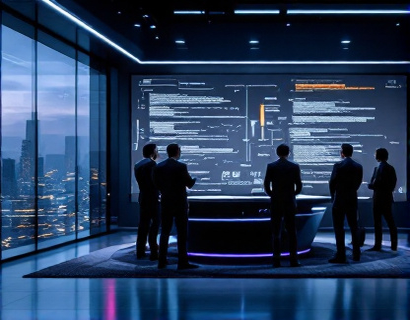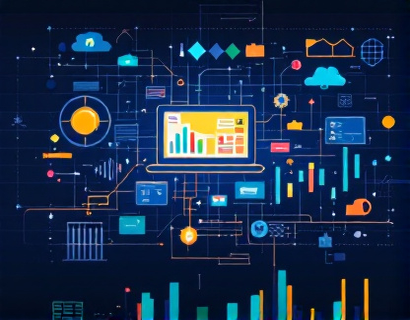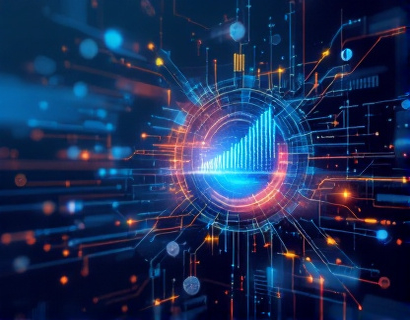Unlocking the Universe: Interactive Software for Astronomy Education and Exploration
The quest to understand the cosmos has captivated human imagination for centuries. From the earliest astronomers who mapped the stars to modern scientists unraveling the mysteries of black holes, the allure of the universe remains unbroken. In recent years, the advent of interactive software has revolutionized astronomy education and exploration, making the vast and complex universe more accessible than ever before. This article delves into the transformative power of these tools, designed to bridge the gap between intricate celestial phenomena and engaging, understandable education.
Interactive software for astronomy education is not just a tool; it is a gateway to a deeper understanding of the cosmos. These platforms offer immersive learning experiences that go beyond traditional textbooks and lectures. By leveraging advanced graphics, simulations, and real-time data, users can explore the universe in a way that was once the domain of professional astronomers. For astronomy enthusiasts, educators, and students, this software opens doors to a world of discovery and curiosity.
Immersive Learning Experiences
One of the most significant advantages of interactive astronomy software is its ability to create immersive learning environments. Users can step into a virtual observatory, navigate through the solar system, or journey across galaxies. These experiences are not just visually stunning but also highly educational. For instance, students can manipulate 3D models of planets, observe the effects of gravity on different celestial bodies, and understand the dynamics of orbital mechanics in a hands-on manner.
Engagement is a critical factor in education, and interactive software excels in this aspect. Traditional methods often struggle to maintain student interest over time, but interactive tools keep learners engaged through interactive quizzes, gamified challenges, and real-time feedback. This engagement fosters a deeper connection with the subject matter, encouraging students to explore further and retain information more effectively.
Comprehensive Educational Resources
Interactive astronomy software is more than just a visual treat; it is a comprehensive resource center. These platforms offer a wealth of information, from basic astronomy concepts to advanced topics in astrophysics. Users can access detailed explanations, videos, simulations, and interactive diagrams that cater to various learning styles. Whether a user is a beginner or an advanced learner, the software adapts to provide content that is both challenging and accessible.
For educators, these resources are invaluable. They can use the software to create custom lesson plans, assign interactive assignments, and track student progress. The platform often includes teacher guides and curriculum-aligned materials, making it easier to integrate astronomy into existing science curricula. This flexibility ensures that the software can be used in a variety of educational settings, from elementary schools to universities.
Real-Time Data and Current Events
Another compelling feature of interactive astronomy software is its ability to incorporate real-time data and current astronomical events. Users can monitor live data from telescopes and space probes, witness celestial events as they happen, and participate in citizen science projects. This connection to the real world of astronomy research makes the learning experience more relevant and exciting.
For example, during a planetary alignment or a comet passage, the software can provide up-to-date information, images, and videos. Users can join virtual observatories to collaborate with other enthusiasts and professionals, sharing observations and insights. This real-time interaction not only enhances the learning experience but also fosters a sense of community among astronomy enthusiasts.
Interactive Simulations and Models
Simulations and models are at the heart of interactive astronomy software. These tools allow users to visualize and understand complex phenomena that are difficult to grasp through text or static images. For instance, users can simulate the formation of galaxies, observe the life cycle of stars, or explore the intricacies of black holes. These simulations are based on real scientific models and data, ensuring accuracy and educational value.
Interactive models also enable users to conduct virtual experiments. They can adjust variables, observe outcomes, and draw conclusions in a controlled environment. This hands-on approach is particularly beneficial for students who may not have access to physical observatories or advanced laboratory equipment. By simulating these experiences, the software bridges the gap between theory and practice, enhancing comprehension and retention.
Accessibility and Inclusivity
Interactive astronomy software is designed to be accessible to a wide audience. It breaks down barriers by making advanced astronomical concepts understandable to people of all ages and backgrounds. The user-friendly interfaces and intuitive navigation ensure that even those with little prior knowledge can navigate the platform with ease.
Moreover, the software often includes features to accommodate different learning needs. For example, audio descriptions, adjustable text sizes, and multilingual support make the content accessible to users with disabilities or those who speak different languages. This inclusivity ensures that the wonders of the universe are within reach of everyone, promoting a more diverse and inclusive scientific community.
Collaboration and Community Building
The interactive nature of astronomy software also facilitates collaboration and community building. Users can join forums, participate in discussions, and share their findings with others around the world. This global community fosters a spirit of cooperation and shared learning, where users can ask questions, seek advice, and collaborate on projects.
For educators, this community aspect is particularly valuable. They can connect with other teachers, exchange resources, and participate in professional development opportunities. The software often includes features for creating and managing online classes, making it a comprehensive tool for both in-class and remote learning.
Future Directions and Innovations
As technology continues to advance, the potential for interactive astronomy software is vast. Future developments may include even more sophisticated simulations, integration with artificial intelligence for personalized learning, and enhanced virtual reality experiences. These innovations will further blur the lines between the virtual and real worlds, providing users with unprecedented opportunities to explore the universe.
For instance, AI-powered tutoring systems could offer personalized guidance based on a user's learning pace and style. Virtual reality environments could transport users to the surface of Mars or inside a neutron star, offering experiences that are currently impossible. These advancements will not only enhance education but also inspire the next generation of astronomers and scientists.
Conclusion
Interactive software for astronomy education and exploration is a powerful tool that transforms the way we learn about the universe. By providing immersive experiences, comprehensive resources, and real-time data, these platforms make celestial concepts accessible and engaging for everyone. Whether you are a student, educator, or space enthusiast, the universe is now more explorable than ever before. Embrace this technology and unlock the secrets of the cosmos.










































